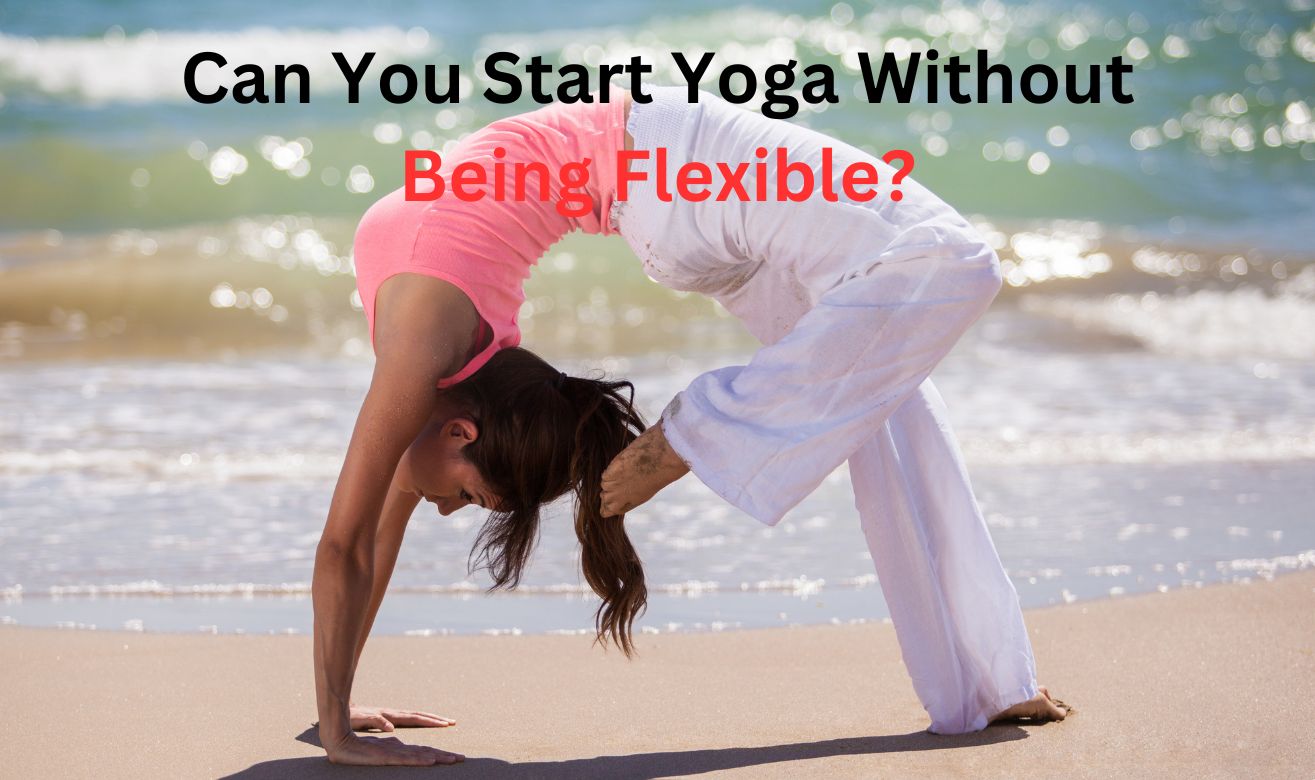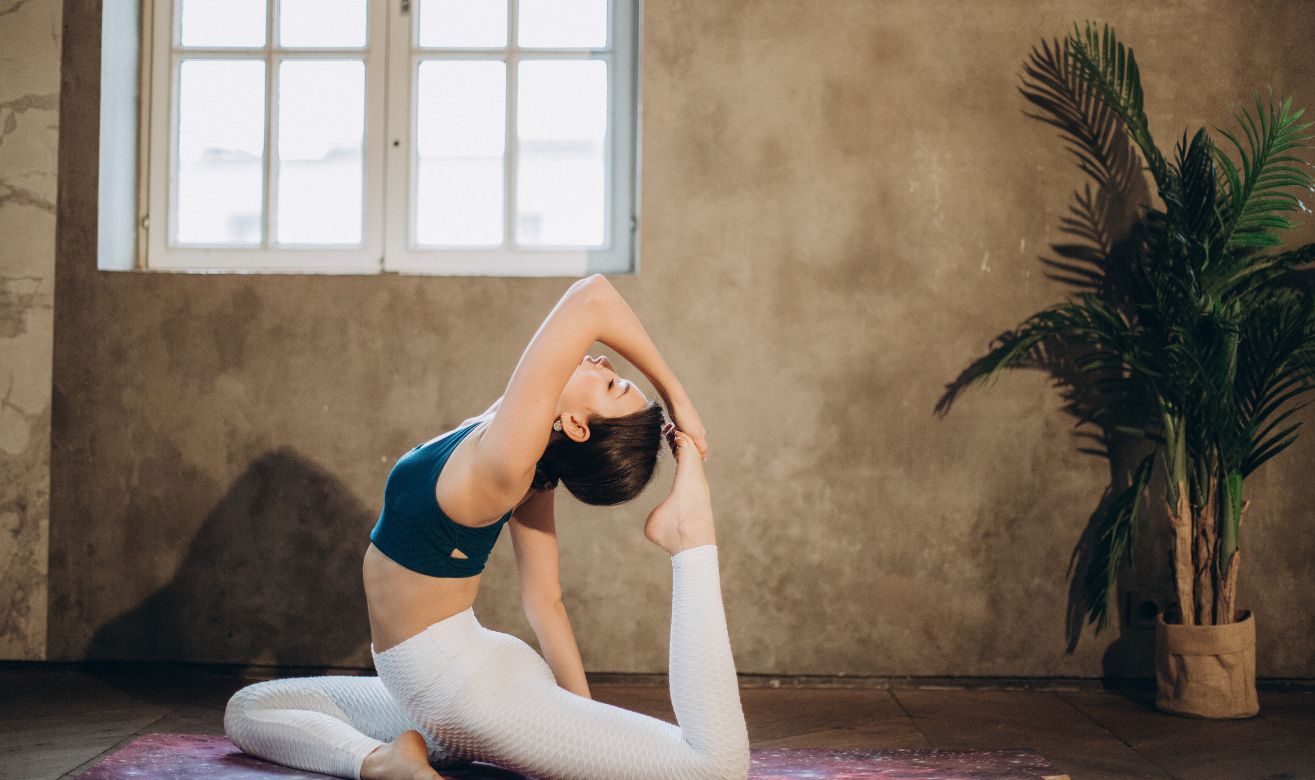One of my friends has asked me today if she is willing to do yoga to improve her health, but her flexibility restrains her. She is seeking a solution.
Well, this write-up is for those who are interested in doing yoga but leave their decision, because of the myth that their body is not flexible.
In this article, you will find ways to do yoga, whether you are a beginner or have been doing it for a long time.
Having flexibility like a gymnast is not required to try out yoga for the first time. Since you do not have to be flexible before practicing yoga.
The flexibility you obtain from practicing yoga comes gradually, instead of being necessary at the beginning.

The Biggest Myth in Yoga: You Must Be Flexible to Begin
Why Flexibility Is Not a Prerequisite
Many believe that very flexible people can only practice yoga, and this is a common mistake today.
Doing yoga is about connecting with your mind, body, breath, and soul, not just limited to getting photos for your social media handles. In fact, the reality is you don’t have to be flexible before you start practicing yoga.
However, in your early days, when you started practicing yoga, you worked on both physical and spiritual health, and improving flexibility is one of the results. However, flexibility is not the ultimate goal of yoga.
Most advanced yogis began with hamstrings that were not very flexible and tight hips.
Yoga Is About Progress, Not Perfection
Trying to be perfect is not allowed in yoga. It’s all about coming back to your practice. It’s all about coming back to your practice regularly, no matter how far you can go. Breathing into a pose helps you develop, no matter if it’s practically, mentally, or emotionally.
Do flexibility movements matter when you start practicing yoga?
Not exactly, but your flexibility starts improving when you start practicing yoga regularly.
How Yoga Itself Improves Your Flexibility Over Time
Beginner-Friendly Poses to Get You Started
Yoga helps you gently move your body. Practicing regularly results in an eventual improvement in your mobility. You will probably begin by feeling stiff, but poses such as:
- Child’s Pose (Balasana)
- Cat-Cow Stretch (Marjaryasana-Bitilasana)
- Downward-Facing Dog (Adho Mukha Svanasana)
- Low Lunge (Anjaneyasana)
- Supine Twist (Supta Matsyendrasana)
These poses you can start practicing in your early time, and are perfect for beginners. Practicing these poses will slowly stretch tight muscles without overexertion.
Focus on Strength, Breath, and Mindfulness
Flexibility is one thing among many others. As you start practicing yoga, your strength, joints, and flexibility increase.
Learning to meditate on your breath encourages you to become more aware, which, in time, weakens tension in your body and mind.
The practice of yoga helps you respect your body and then slowly make changes over time.

Real Stories: Yoga Beginners Who Couldn’t Touch Their Toes
How Consistency Helped Them Grow Physically and Mentally
Well, this write-up is about those who find shortages in flexibility but are still interested in yoga. Here are some stories based on true events.
This is a story of two personalities, one of them is an IT professional, and one of them is a teacher.
Meet Reema, who was a 34-year-old marketing executive and could never sit cross-legged for a minute.
Ankur, a 50-year-old teacher, felt back stiffness.
Both of them wondered if they were able to get rid of their physical problems in any way.
But because of their rigidity, they find it difficult to do yoga.
However, once they tried to do yoga and after practicing beginner-friendly yoga for only 3 months, 3 times every week, they could observe some changes.
Less tension in the muscles.
More energy and a better way of sitting or standing
Improved sleeping patterns with less stress.
To sum up, they found that doing yoga was a constant journey, and flexible muscles were just something they gained on the way.
Tips for Starting Yoga With a Stiff Body
Use Props and Modifications
If your body is tensed, relying on the prop will assist you.
You can get into and stay in the postures with blocks, straps, bolsters, or a rolled towel.
Apply a strap around your feet to help you during forward bends.
Hold onto block props using both your hands when you do Triangle (Trikonasana) and similar standing poses.
Put a folded blanket under your buttocks while sitting in a pose to raise your hips.
Don’t think that your practice is in any way less valuable because of modifications.
Practice Patience and Body Awareness
You shouldn’t rush while practicing yoga. Becoming flexible requires a significant amount of time. When you start practicing yoga and contributing your body to it, allow your body to open up.
Focus on the Following Aspects When You Start Practicing Yoga:
- Check out how you breathe– Is it easy or do you find it difficult?
- Do you feel any pain from stretching?
- Ensure that you are not hurting when practicing yoga.
If you feel any of the above-related issues, then either stop your yoga practice or slow down the pace of doing it. Check out again after a few days. If the issue is still prevalent, do yoga under the trainer or a professional yoga expert.
The Mental and Emotional Flexibility Yoga Cultivates
The twist is that when most people wonder about starting yoga without being flexible, but when they start practicing yoga, their body becomes more flexible, and emotionally they become strong, and mentally healthy, also starts boosting.
Now who perform yoga daily are more flexible and adaptable compared to the others.
Daily Yoga helps you gain the following skills:
- Now you gave a prompt answer to any of the queries without any glitch.
- Release the need for certain results.
- Appreciate your physical needs by being kind and gentle to yourself.
- Stay aware of the present at all times
- That brings about the real difference.
Regularly practicing yoga makes you more focused on your body’s health rather than on its appearance. It helps you become flexible and adaptable, not only in your legs.
Final Thoughts – Yoga Welcomes Every Body, Not Just the Flexible
In brief, you don’t have to be flexible before starting yoga. Yes, it is true that yoga demands flexibility, but not mandates it. However, when you start practicing yoga daily, the flexibility itself increases, but it takes time.
Flexibility does not have to do anything with the time limit for practicing yoga. It entirely depends on how your body responds at the time of stretching and other poses.
If you are brand new or an expert, yoga will help you precisely where you are and won’t judge or pressure you.
Just have your yoga mat, choose the poses under your expert (if any), and leave all your worries; focus only on how you’ll perform that pose.
Yoga is not only about being able to touch your toes. The most important part is what you gain during your descent.
